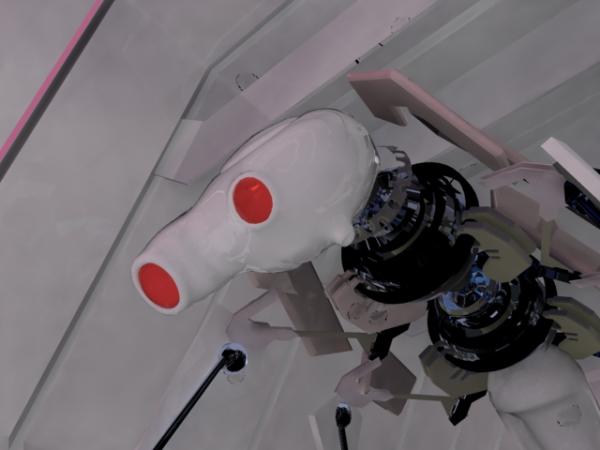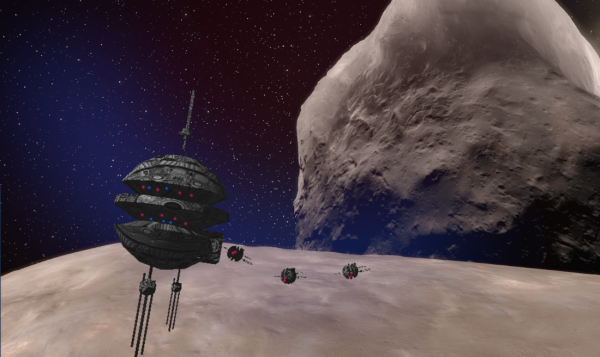BY LETTER
Neumann
 Image from Juan Ochoa |
Neumanns are self-replicating autonomous machines, usually residents of interplanetary or even interstellar space. While some neumanns are sophonts, making them a type of vec, other are non-sophont, making them bots.
Though some varieties of vec in the Current Era that live in habs or on planetary surfaces have onboard neumann capability and may also be called neumanns, the term 'neumann' has more typically been used to refer to neumann-capable bots or vecs who work in space. Often these are employed for exploration or military service in regions far removed from the nearest stargate. Under the right conditions, a neumann is able to build a working copy of itself using materials in its environment. In the case of neumanns active in interplanetary space these resources are typically asteroids, comets, or small moonlets. Use of neumanns is often discouraged by centralists because of their tendency to act in unpredictable ways, even on occasion founding entire clades and empires. However, neumanns are too valuable in opening up the frontier and in the occasional war, so they continue to be used. It is impossible to estimate accurately the number of turingrade or superturing neumanns, motherships, daughterships, turingrade and higher drones, and macroscale self-replicators of various kinds, but given their fecundity and the fact that they are concentrated in regions of the Periphery that often lack census data they account for a larger proportion of the sophonts in the Terragen Sphere than most residents of the Civilized Galaxy realize.
 Image from Steve Bowers |
Most transapient entities are capable of self-replication, although the largest archailects are too large and distributed too widely to replicate readily.
Articles
- Golden Submersibles, The - Text by Steve Bowers
Submersible neumanns of Guanche. - Nauri - Text by M. Alan Kazlev, amended slightly by Steve Bowers
Neumann clade from Alpha Centauri. - Neumann (Von Neumann Self-Replicating Systems) - Text by M. Alan Kazlev
Self-replicating autonomous machines, mainly referring to those working in space, especially exploring regions too remote to be easily reached by organics. - PackRat Spores, AKA '____' Spores - Text by Daniel Eliot Boese
A multi-instance clade of aioid dividuals who attempt to spread themselves by launching "spore" copies to other star-systems. - Von Neumann Probe - Text by Anders Sandberg in his Transhuman Terminology
A Von Neumann Machine able to move over interstellar or interplanetary distances and to utilize local materials to build new copies of itself. Such probes are used to set up new colonies, perform megascale engineering or explore the universe (see the Far Edge Party).
Development Notes
Text by M. Alan Kazlev
additions by John B, Stephen Inniss, Todd Drashner (2018)
Initially published on 14 August 2001.
additions by John B, Stephen Inniss, Todd Drashner (2018)
Initially published on 14 August 2001.
Additional Information






